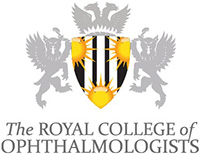| TITLE | SCREENING |
|---|
Code |
HPDP1 |
Learning Outcome |
- Know the principles of screening.
- Understand the local and national organisation of screening programmes for ophthalmic diseases, in particular diabetic eye and Retinopathy of Prematurity (ROP) screening.
- Provide, where required, local screening programmes with clinical expertise.
|
Assessment |
CbD Portfolio Part 2 FRCOphth
|
Assessor |
|
Target Year of Achievement |
Year 7 |
Related Learning Outcomes |
|
Overview |
- Understand the logistics, pros, cons and pitfalls of the ways of delivering a screening service to the local population.
- Understand the risks, limitations and benefits of screening.
- Recognise the consequences of not screening for diabetic retinopathy.
- Comprehend the factors (including accessibility, personal mobility and education) that may put patients off being involved in screening and put in actions to minimise the effect of the same.
- Understand how patient management pathways are configured to ensure an effective and robust failsafe system for Hospital Eye services and Diabetic Screening Services.
- Understand the importance of accurate disease registers in the context of screening.
- Understand the quality assurance (QA) processes that are necessary to be implemented in national screening programmes e.g. diabetic retinopathy screening.
- Understand the distinction between systematic and opportunistic screening. Understand how outcomes of screening are dealt with.
- Have detailed knowledge of grading classification and referral criteria for the major national screening programmes including diabetic retinopathy and glaucoma screening.
- Attend and observe diabetic retinopathy screening, ROP screening and community vision screening in children.
|
Resources |
View Resources |
